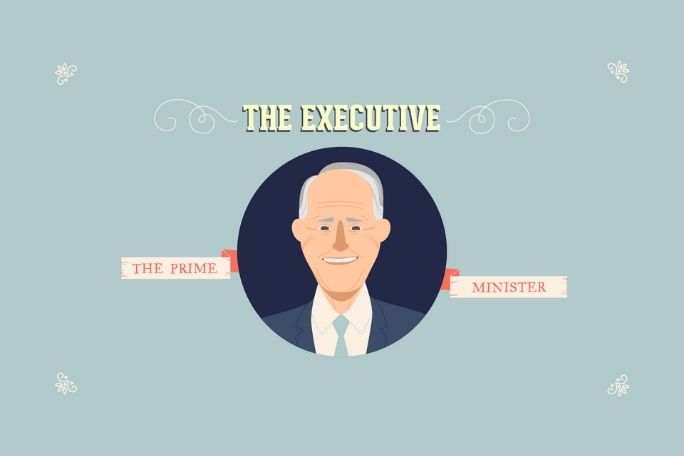Lesson summary
In this Finding Out lesson, students will explore the concept of the balance of power and the three arms of government that maintain this balance: The Legislature, The Executive and The Judiciary. Students will work in teams to research articles of the Constitution, and will use a graphic organiser to illustrate their understanding of the connection between the three arms of government, the Australian Constitution and our rights and freedoms.
Essential questions:
- How is governmental power is kept in check?
- What happens if governmental power is not kept in check?
- What is the connection between the balance of power and rights and freedoms?
Lesson guides and printables
Curriculum links
Select your curriculum from the options below.
Lesson details
Curriculum mapping
(V9) Australian Curriculum content descriptions:
Year 7 Civics and Citizenship:
- The key features of Australia’s system of government, including democracy, the Australian Constitution, responsible government and federalism (AC9HC7K01)
- The key principles and features of the Australian legal system, including the Australian Constitution, the rule of law and the court system (AC9HC7K03)
General capabilities: Literacy, Critical and Creative Thinking
Relevant parts of year 7 achievement standards: Students describe the key features of Australia's system of government, and the principles and features of the Australian legal system.
Unit of work: Story of Our Rights and Freedoms – Exploring Rights, Freedoms and Constitutional Change
Time required: 140 mins.
Level of teacher scaffolding: Medium – provide instructions and lead class discussion.
Resources required
- Student Worksheet – one copy per student
- Inflated balloons (one per group of eight). UDHR articles (cut up and distribute one to each student)
- The Executive, The Judiciary, The Legislature Factsheets (one copy of each per student)
- Separation of Powers Flow Diagram (six copies), Separation of Powers Flow Diagram teacher guide
- First Three Chapters of the Australian Constitution (three copies)
- Power Grab scenarios (three copies)
Skills
This lesson is designed to build students’ competencies in the following skills:
- Communication
- Collaboration
- Ethical understanding
Additional info
Throughout the Story of Our Rights and Freedoms lessons, students will consider Civics and Citizenship concepts through a human rights lens. They will critically assess the Australian system of government and the effect that it has on our rights and freedoms.
There is no universally accepted definition of human rights, and our understanding is continually developing. Some definitions include:
- The recognition and respect of peoples’ dignity
- A set of moral and legal guidelines that promote and protect the recognition of our values, our identity and access to an adequate standard of living
- The basic standards by which we can identify and measure inequality and fairness
- Those rights associated with the Universal Declaration of Human Rights (UDHR)
When we talk about human rights we usually refer to principles that have been agreed upon by countries throughout the world. These rights have been set down in international agreements and form part of international law. They can also be written into the domestic law of individual countries. Human rights cover virtually every area of human life and activity. These include:
- Civil and political rights, such as freedom of speech and freedom from torture
- Economic and social rights, such as the rights to health and education
- Individual rights, including the right to a fair trial
- Collective rights, or those rights that apply to groups of people, such as the right to a healthy environment or to live on one’s ancestral land.
The UDHR is an international document that recognises the basic rights and fundamental freedoms to which all human beings are entitled. It was adopted by the United Nations General Assembly on 10 December 1948 and marks a key milestone in the history of human rights. The Magna Carta, though limited in who it protected, was an important precursor to the UDHR.
Click here to watch a video about the Magna Carta.
You can view the entire text of the Universal Declaration of Human Rights, and the other core international human rights treaties, on the United Nation’s website or by downloading RightsApp (free from the iTunes App store).


Welcome back!
Don't have an account yet?
Log in with:
Create your free Cool.org account.
Many of our resources are free, with an option to upgrade to Cool+ for premium content.
Already have an account?
Sign up with:
By signing up you accept Cool.org's Terms and Conditions(Opens in new tab) and Privacy Policy(Opens in new tab).